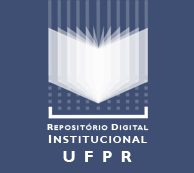DIAGNOSTIC APPLICATIONS OF INFRARED THERMOGRAPHY IN CAPTIVE BRAZILIAN CANIDS AND FELIDS
DOI:
https://doi.org/10.5380/avs.v25i2.71088Palavras-chave:
animal welfare, carnivores, imaginology, zooResumo
ABSTRACT: Infrared thermography is a noninvasive diagnostic imaging method that does not require animal restraint. This tool provides instant images in real time, even at great distances, being very advantageous for wild animals. The thermograph measures the frequency of infrared rays, it locates hot or cold regions in the body tissues, detecting physiological or pathological processes that modify body temperature. In the veterinary diagnosis of wild animals, thermal imaging is used to determine causes of lameness, lesions and inflammation. It also can be used to diagnosis infectious diseases, reproductive period or gestation and to measure animal welfare and stress levels. This research aimed to use infrared thermography as a tool for remote diagnosis in Brazilian canids and felids kept ex-situ at the Sorocaba Zoo, Brazil. During one year the images were recorded biweekly in 42 individuals (18 canids and 24 felids). No thermal change was noticed in the images taken biweekly. Twelve animals presented symptoms at different times, then images were taken immediately and recorded every 3 days to follow the evolution of the clinical signs and treatment. Atypical images were interpreted and correlated with the clinical signs. The method showed good sensitivity when applied to felids. In the canids there was good sensitivity for head and limb disorders, because these regions have shorter hair. It is concluded that thermography is an important diagnostic tool for canids and felids, being an examination carried out at a distance, without stress, non-invasive and painless, prioritizing animal welfare.
Downloads
Publicado
Como Citar
Edição
Seção
Licença
Autores que publicam nesta revista concordam com os seguintes termos:
- Autores mantém os direitos autorais e concedem à revista o direito de primeira publicação, com o trabalho simultaneamente licenciado sob a Creative Commons - Atribuição 4.0 Internacional que permite o compartilhamento do trabalho com reconhecimento da autoria e publicação inicial nesta revista.
- Autores têm autorização para assumir contratos adicionais separadamente, para distribuição não-exclusiva da versão do trabalho publicada nesta revista (ex.: publicar em repositório institucional ou como capítulo de livro), com reconhecimento de autoria e publicação inicial nesta revista.
- Autores têm permissão e são estimulados a publicar e distribuir seu trabalho online (ex.: em repositórios institucionais ou na sua página pessoal) a qualquer ponto antes ou durante o processo editorial, já que isso pode gerar alterações produtivas, bem como aumentar o impacto e a citação do trabalho publicado.













